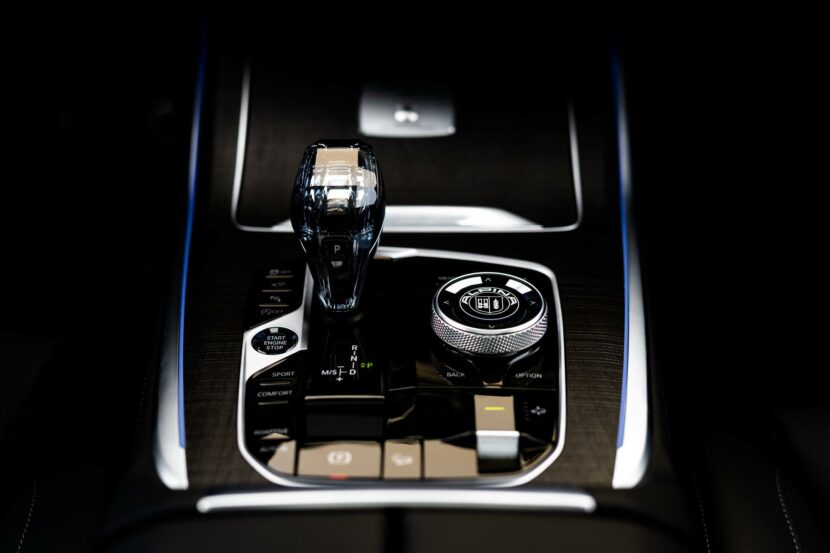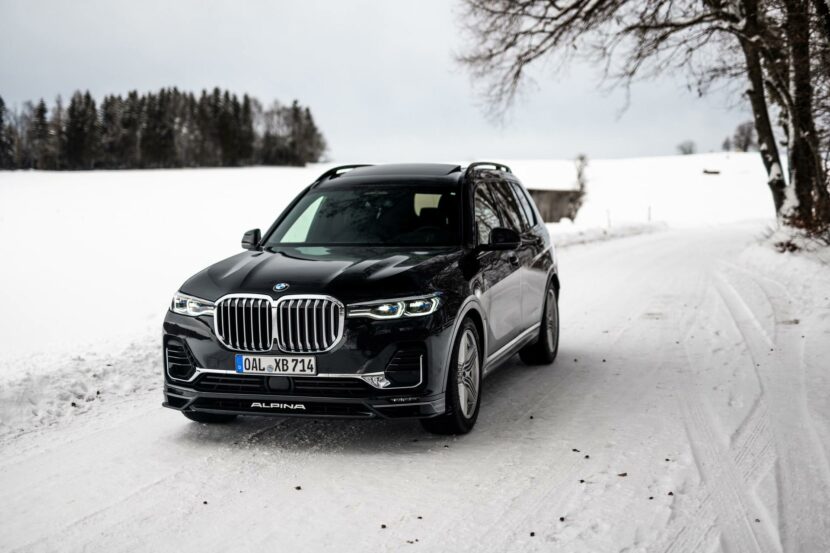TEST DRIVE: 2021 BMW ALPINA XB7 – Smooth, Fast, Agile, Understated but Characterful SUV
Inside the interior, you will find a wide range of standard equipment including high-end Merino leather, comfort seats, seat heating, soft-close doors, Alcantara headlining and a leather instrument panel. The three-part panoramic glass sunroof is combined with special ALPINA features such as the “Crafted Clarity” glass application and iDrive controller in ALPINA design, blue illuminated gear selector switch, ALPINA production plaque, illuminated ALPINA door sills and the ALPINA sport steering wheel, hand-finished in LAVALINA leather and featuring trademark blue/green stitching. Upon request, you can get a wide variety of interior options via the ALPINA leather workshop.
In addition to the ALPINA myrtle luxury wood interior trim, two further ALPINA trim variants are optionally available: piano lacquer and the all new natural walnut anthracite. Each of the ALPINA wood trim variants features the ALPINA roundel logo. Like other ALPINAs, the full-color digital instrument display has its signature ALPINA design with the use of blue and green colors.


Anyone who has ever seen or driven an ALPINA is aware and familiar of these changes compared to the standard BMW package, but where the XB7 really shines is the driving experience and the ability to combine its driving dynamics with a type of agility and performance that you don’t often see. Definitely not, when you look at where the car is positioned in connection to its direct competitors. An Audi RSQ8 and Porsche Cayenne Turbo might be faster to 100 km/h (62 mph), but both won’t offer you the refinement of the XB7. Nor are you able to drive in sheer comfort at 290 km/h (180 mph) in either of them.
Heavy, But Nimble On The Road
The XB7’s performance is coming from an X7 M50i engine which is a 4.4-liter, twin-turbocharged V8, which has been altered to meet the ALPINA standard. Power goes from the 523 horsepower in the M50i up to a whopping 612 in the XB7, while torque hops from 553 pound-feet to 590. This allows the SUV to catapult you from 0 to 100 km/h (0 to 62 mph) in 4.2 seconds (half a second faster than the M50i). The sprint from 0 to 200 km/h (0 to 124 mph) goes in just 14.9 seconds.


The true nature is immediately felt when you touch the throttle pedal. You have the 590 pound-feet or 800 Nm available from 2000 up to 5000 revs. The engine’s power characteristics and enhanced throttle response are the result of two new, twin-scroll turbochargers with 54 mm (2.1“) turbines and an enhanced cooling systems, which receives more air through the bigger front air intakes. The ALPINA sport exhaust system complements the package with a more noticeable, but still with a refined sound track. You can change the sound by switching between Comfort and Sport mode, which controls the active exhaust flaps.
To convert the power to the road, the Bavarians have upgraded the suspension and offer an electronically-variable rear axle limited-slip differential as standard, which connects to BMW’s xDrive all-wheel drive system. Like with the new B3 and D3, the engineers have altered the suspension set up, offering a wide range of options and a new Comfort Plus mode for ultimate refinement. On the XB7, the two-axle air springs, damper set-up and Active Roll Stabilization have been enhanced to offer a wider choice for you as a driver. Comfort Plus offers the plush ride and on the other hand there is Sport Plus with its race-inspired dynamics, which on the Winter tires didn’t really shine.
